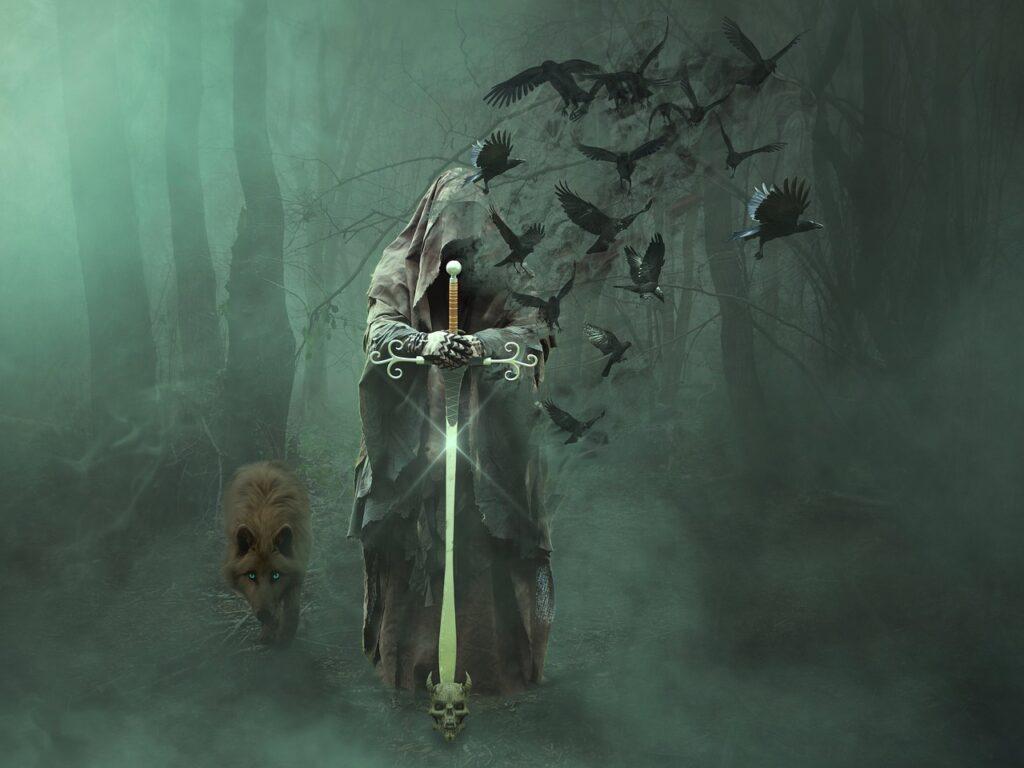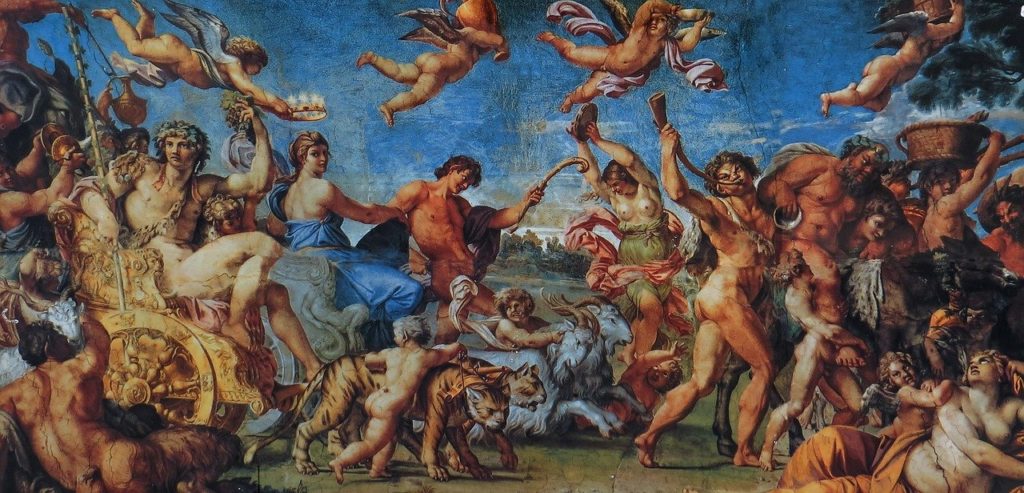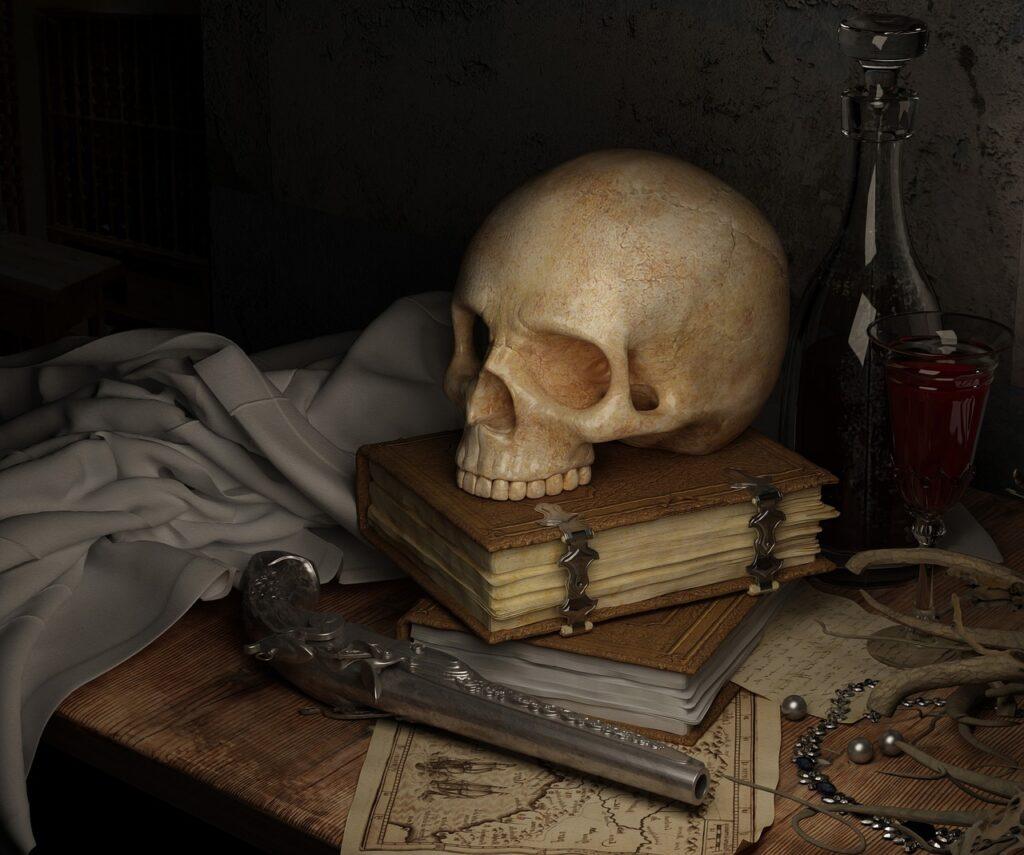
The question of what happens when we die is a subject of profound curiosity and contemplation. Death is the transformative phenomenon through which the soul departs from the physical body. While the body, composed of perishable matter, is subject to birth, disease, old age, and ultimately death, the soul is eternal and imperishable, existing in an everlasting state. All living beings possess an eternal essence known as the soul, which becomes entrapped within material bodies. It is the soul that gives rise to consciousness in living entities, and according to scriptures, life is not merely the result of chemical reactions but rather the presence of the soul within a body that brings it to life. Unlike the temporary and ever-changing physical body, the soul remains unchanging and eternal, devoid of any beginning or end.
Within the material realm, the soul is accompanied by a subtle body, which is then enclosed within a gross physical body. Upon the occurrence of death, the soul, based on its accumulated pious credits or Karma, accepts another body. This subsequent embodiment can be that of a human, an animal, a plant, or even a spiritual being transcending the limitations of physicality. Death, therefore, signifies the transition into a new body that is specifically designed to facilitate the fulfillment of the soul’s desires and aspirations. This cyclic process, commonly referred to as reincarnation, continues until the soul transcends material attachments and achieves salvation, uniting with the Supreme Lord.

Embedded within the vast cosmic dance of life’s inexorable rhythm, the intricate web of cause and effect, known as “karma,” assumes a central role. Karma, the essence of action, manifests in both virtuous and sinful deeds, intricately weaving delicate threads that shape the trajectory of subsequent births. A profound tapestry of deeds, thoughts, and intentions binds the human spirit, guiding it towards its eventual rebirth.
dehino smin yatha dehe
kaumaram yauvanam jara
tatha dehantara-praptir
dhiras tatra na muhyati
(Bhagavad Gita 2.13)
–
Just as the embodied soul progresses through different stages of life, transitioning from childhood to youth, and then to old age within the same physical body, similarly, at the time of death, the soul moves into a new body. A person of wisdom and clarity is not perplexed by this transition.
8,400,000 species of Life
According to the ancient wisdom of Vedic literatures, the material world encompasses a vast array of life forms, totaling 8.4 million species. This rich tapestry of existence spans across various realms and encompasses diverse categories of life, including plants, animals, humans, and even celestial beings known as demigods. These species are classified into six distinct divisions, each with its own unique characteristics:
- Humans (including demigods): This division comprises approximately 400,000 species, encompassing a broad spectrum of human-like beings, including demigods who reside in celestial realms.
- Beasts: This division encompasses an extensive range of creatures, totaling around 3,000,000 species. Beasts refer to non-human animals, with diverse forms and behaviors.
- Birds: Within this division, there exist approximately 1,000,000 species of birds, exhibiting a remarkable array of sizes, shapes, and habitats.
- Insects: The division of insects comprises around 1,100,000 species, featuring a multitude of small, often winged creatures, exhibiting immense diversity in appearance and behavior.
- Aquatics: The aquatic division encompasses approximately 900,000 species, representing life forms dwelling in the vast expanses of water, including fish, marine mammals, and various other aquatic organisms.
- Plants: This division boasts an astounding variety of flora, comprising around 2,000,000 species. Plants exhibit an array of forms, from towering trees to delicate flowers, providing sustenance and beauty to the world.
These divisions encompass the diverse tapestry of life within the material world, highlighting the intricate interplay of existence and the boundless creativity found in the vast realm of nature.
What happens after Death?
Death is often described as an excruciatingly painful experience, likened to being simultaneously bitten by 40,000 scorpions. The intensity of this agony is believed to vary depending on one’s predominant qualities at the time of death. According to the principles of sattva guna (goodness), raja guna (passion), and tama-guna (ignorance), the destination of the soul differs.
Those who depart from life while influenced by the mode of goodness (sattva guna) ascend to the celestial realm of the devas (demigods), where they experience a heightened existence in a higher celestial plane. In contrast, individuals influenced by the mode of passion (raja guna) continue their journey within the middle regions, taking birth again as human beings. On the contrary, when the mode of ignorance (tama guna) influences one’s departure, the soul descends to lower forms of life, dwelling in realms characterized by ignorance.

In certain cases, sinful souls do not immediately transition to another physical body after death but linger as ethereal entities known as ghosts, residing in their subtle bodies. The Vedas provide explanations for becoming a ghost, such as instances of suicide. These souls undergo a process of purification through suffering while occupying lower species, gradually ascending back to the human platform.
When a soul attains the heavenly realms, it resides there until its accumulated virtuous merits are exhausted. The denizens of heaven indulge in sense gratification and enjoy an extended lifespan. Eventually, the soul descends once again to the earthly realm, resuming the cycle of birth and death.
Similarly, just as individuals who have performed righteous deeds attain heavenly planets, those who have committed sins are subjected to suffering in hellish realms. These hellish planets serve as places of severe punishment, where sinners experience a portion of the consequences of their actions. For instance, in planets like Maharaurava, ferocious animals torment sinners and consume their flesh alive. In places like Kumbhipaka, sinners are submerged in boiling oil, and in realms like Kalasutra, they are forced to traverse scorching copper surfaces heated from below by fire and above by the scorching sun. After enduring sufficient suffering, sinners are reborn into lower life forms on Earth, where they undergo the remaining karmic reactions. Through transmigration across various species, they eventually regain the human form, where they have the opportunity to choose between a virtuous or sinful life, thereby determining their own destiny.

This intricate interplay of karma and the qualities of nature intricately weaves the trajectory of the soul’s journey, leading it through diverse realms and forms of existence. Within this cosmic dance, the soul undergoes purification, learns valuable lessons, and is presented with the opportunity for spiritual evolution.
Liberation from the Cycle of Birth and Death: Attaining Moksha
The term “Moksha” originates from the Sanskrit word “Mukti,” which denotes liberation or freedom. Moksha represents the ultimate goal of transcending the material world, that includes heavenly, earthly and hellish realms, and its burdensome entanglements. Within this material realm, marked by the inherent flaws of birth, disease, old age, and death, living beings endure various sufferings caused by natural calamities, interactions with fellow beings, and the anxieties that plague the mind. Hinduism, also known as Sanatan Dharma, posits that Moksha entails breaking free from the cycle of birth and death, known as reincarnation, and experiencing blissful union with the Divine. Moksha signifies the liberation from the shackles of the gross and subtle bodies, allowing one to reconnect with their original spiritual identity and unite with the Supreme Being. It is considered the ultimate culmination of human life’s purpose.
There exist five types of salvation, or Moksha, that a spiritual seeker can attain at the culmination of their journey, thereby transcending the cycles of birth and death:

- Svarupya: This form of salvation grants the individual the same divine form as that of the Supreme Lord, aligning their essence with the Lord’s divine nature.
- Salokya: In this liberation, the individual gains the privilege of dwelling in the same abode as the Supreme Lord, sharing proximity and divine presence.
- Sarsti: Acquiring this liberation bestows upon the individual the same opulence and divine attributes as the Lord, residing in the celestial realms known as Vaikuntha.
- Samipya: This type of liberation offers the individual an intimate relationship with the Lord, becoming a personal associate and basking in His direct association and companionship.
- Sayujya: Sayujya refers to a form of liberation where the individual loses their separate identity and merges into the impersonal effulgence of the Supreme Brahman. In this state, the soul is unable to establish a loving relationship or render service to the personal form of the Supreme Lord. Sayujya Mukti, although a state of freedom from material bondage, is viewed unfavorably by devotees who cherish their loving connection with the Lord. It is worth noting that the impersonalists, known as Mayavadis, who do not recognize the Supreme Lord as a person, aspire for Sayujya Mukti.
